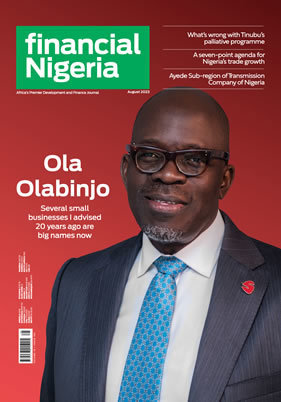Latest News
Investor sentiment towards Sub-Saharan Africa to remain soft – EY

News Highlight
- EY said the weakening investor sentiment towards SSA will be due to heightened geopolitical uncertainty around the world and greater risk aversion rather than the region’s deteriorating economic fundamentals.
Ernst & Young, the global consulting giant, said that it expects investor sentiment towards Sub-Saharan Africa to remain soft, as foreign direct investment will slow over the next few years.
In the year-end update to its Africa Attractiveness Programme released on Wednesday, EY said the weakening investor sentiment towards SSA will be due to heightened geopolitical uncertainty around the world and greater risk aversion rather than the region’s deteriorating economic fundamentals.
“Companies already doing business in Africa will continue to invest, but will probably exercise a greater degree of caution and be more discerning,” EY said. “Some of them will invest at a slower pace, looking to consolidate operations and drive profitability; while others are likely to double down on their investments, using this period of economic slowdown to further strengthen positions in key markets.”
EY further said that although SSA’s growth forecasts for 2016 have fallen to a two-decade low, the growth dynamics across different individual countries and sub-regions are very mixed. The consulting firm said that outside of the sub-continent’s three biggest economies – Nigeria, South Africa, and Angola – many bright spots can be seen in the East, Francophone and North African regions.
“Economic recovery in Angola, Nigeria and South Africa is likely to be a tough and gradual process,” EY said. “However, a diverse group of other economies – including Cote d’Ivoire, Senegal, Ethiopia, Kenya, Tanzania, Mozambique and Egypt are expected to sustain high growth rates over the next 5 years.”
As a result of this variable economic performance – or “multispeed growth”, EY said it foresees a greater degree of unpredictability in terms of FDI patterns.
“It is also quite possible that there will be a relative slowdown in investment in SSA over the next 18 months, as investors adjust their strategies,” the consulting firm said. “This is evident to some extent in the relatively slower FDI activity into Africa in the first half of 2016.”
In the first six months of 2016, EY said greenfield FDI projects in Africa fell 13.4% from 388 projects (2015) to 336 projects (2016). However, the capital value of total investments across the continent rose 30% from $37.5 billion (2015) to $48.9 billion (2016). The average capital investment per project rose from $97 million (2015) to $145 million (2016).
“Whilst North Africa saw stronger FDI activity, SSA saw a slow-down in project numbers and capital inflows,” said EY. “However, this must also be understood in the context of a generally slower FDI environment globally. Relative to the rest of the world, Africa’s growth remains relatively strong, as does its FDI projects and capital inflows.”
In line with previous years, EY said Western Europe remained the largest regional investor in Africa, contributing 35.1% of FDI projects and 17.8% of capital investment in H1’16. At a country level, the US retained its lead with 13.1% of total FDI projects, focused mostly in technology, media, and telecommunications (TMT) and transport & logistics. EY said there has been a surge in investment from Asia-Pacific, led by China and Japan, with the region becoming the second largest when measured by FDI projects.
In the 2016 half-year, EY said the consumer facing sectors – namely TMT, consumer products and retail (CPR), and financial services – remain the primary beneficiaries of FDI projects into Africa.
“We do not, however, anticipate a sharp decline in overall FDI levels in Africa,” note EY. “A key factor here is the structural evolution in FDI in Africa over the past decade – from a high concentration of source countries and destination markets and sectors, to a far more diverse FDI landscape.”
Related News
Latest Blogs
- Lessons for Nigeria's climate finance strategy
- Prospects of a cruise ship port in Nigeria’s blue economy
- Insights from Alame V Shell on corporate liability for environmental damage
- Threats and mitigation strategies against plastic waste in agriculture
- Iran v Israel, what it means for Nigeria
Most Popular News
- Artificial intelligence can help to reduce youth unemployment in Africa – ...
- Nigeria’s GDP climbs to $243 billion after rebasing
- Open Society announces fellowships for four Nigerian public intellectuals
- UK borrowing blow makes tax hikes ‘inevitable’ – Nigel Green
- Renewable energy boom highlights growing regional divide
- IMF commends reform at Federal Inland Revenue Service








